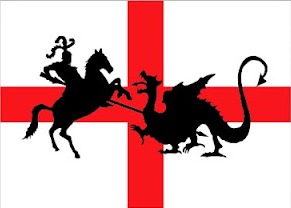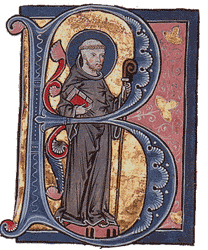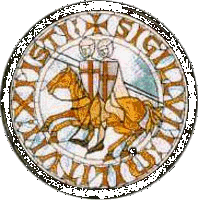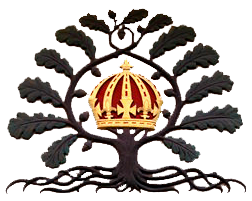Facebook Dustup Over the "Anglican Post-Eucharistic Joy" Video
 Embryo Parson Posted on
Embryo Parson Posted on  Wednesday, December 23, 2015 at 01:41PM
Wednesday, December 23, 2015 at 01:41PM This blog entry is a continuation of the one I posted yesterday about charismatic excess. (See this for previous musings of mine on "bad charismatic habits".)
There is an excellent discussion taking place at the Anglican Church of North America Facebook discussion page on the propriety of national flags in the sanctuary. In the course of that discussion, a Facebook friend of mine named Steven Alspach mentioned that we have bigger fish to fry, namely, the problem of what passes as "Spirit-filled" worship in some Realignment Anglican churches. Mr. Alspach posted the photo of fire jugglers at one of these churches, Church of the Resurrection in Wheaton, IL, and I followed up with the "Anglican Post-Eucharistic Joy" video.
This elicited a comment from a fellow who is familiar with Church of the Resurrection, Stephen Johnson, which highlights, I think, the kind of disdain that many "Spirit-filled" Christians have for those of us who aren't charismatic:
God forbid that expressions of joy and biblical communal dancing should occur at a celebratory service such as the consecration of a new bishop.
Psalm 149:3
praise His name with dancing; Let them sing praises to Him with timbrel and lyre.
I have witnessed the joy of Anglicanism and the pure unadulterated stuffiness of tired disgruntled Episcoalean (sic) Anglicanism. I will take the joyous version of the Upper Midwest over the spiritually dying stuffiness of other Anglican churches any day of the week.
To which I replied:
Straw man, Mr. Johnson. C.S. Lewis would have been quite at home, as are many of us, in that "stuffy" worship, and he would have been appalled at witnessing what went on at that service, as we are.
I'll take Lewis as a model of authentic Anglican spirituality over the supposedly "Spirit filled" any day.
This touched off a lengthy exchange between Messrs. Johson and Alspach:
Stephen Johnson -
Define "authentic Anglican spirituality". Anglicans can't agree on anything, how can there be one "authentic Anglican spirituality"? I was there that day, when Bishop Ruch was consecrated, and what I saw was a genuine response of joy to the new work God was doing in the diocese.
I am as conservative as they come. I am very guarded when it comes "Spirit filled" stuff. However, spiritually dying is clear as day.
God is honored by expressions of joy and gratitude. God is honored by singing new songs in addition to the old with a joyful heart. We must be on guard against bad theology and/or awful musicality, but new does not equal bad.
Please clarify what was so appalling about the service. What was so appalling that would make embracing what Cranmer, Parker, Hooker, et al rejected more appealing?
I'm not saying everything Rez does is best; I am saying we can't be too quick to condemn.
"…[Christians] believe that the living, dynamic activity of love has been going on in God for ever and has created everything else. And that, by the way, is perhaps the most important difference between Christianity and all other religions: that in Christianity God is not a static thing–not even a person–but a dynamic, pulsating activity, a life, almost a kind of drama. Almost, if you will not think me irreverent, a kind of dance…
And now, what does it all matter? It matters more than anything else in the world. The whole dance, or drama, or pattern of this three-Personal life is to be played out in each one of us: or (putting it the other way round) each one of us has got to enter that pattern, take his place in that dance. There is no other way to the happiness for which we were made.”
–from C.S. Lewis, Mere Christianity
Steven Alspach -
Wow, Stephen Johnson, you are just way off on this one.
First, you presented us with a false choice: (1) Anglican worship with wild dancing, or (2) Dead Anglicanism with stuffy worship. Did you ever consider the possibility that both are abhorrent? Instead of either of those, I would like to go to a classical Anglican Church where we worship the Master with due reverence and awe and wonder.... How about that?
Second, the verse you quoted in the Psalms has nothing to do with worship IN THE SANCTUARY. The priests of the Old Testament DID NOT dance around in the Holy Place. That kind of activity took place in the outer courts, or during processions, or in any common area in Israel--but NOT in the sanctuary. People do this all the time.. They quote those verses in the psalms, sucking them out of their proper context, and then misapply their meaning to justify some innovative and inappropriate behavior during worship.
Third, your quote from CS Lewis has nothing to do with dancing at the altar during corporate worship... He is actually employing Eastern Orthodox theology in this section of his Mere Christianity (and the Orthodox would NEVER wildly go dancing around their altars). Lewis is speaking to the idea of the Trinity acting as a "synergia"-- a well coordinated, well choreographed, and beautifully orderly divine "dance." You are making serious errors in quoting this to us. You are, first, taking the word "dance" at face value (as if CS Lewis was talking about literal dancing). Second, you are assuming that "dance," when used of the Trinity, is employing the image of American Dancing--which is wildly spontaneous, disordered, and individualistic. I assume you have seen other cultures dance, correct? English ballroom dancing? Greek dancing? Middle Eastern dancing? You've seen these right? Highly, orchestrated, communal, and.....in a word.... SYNERGISTIC. Acting as one unit.
Third, you then make the logical jump that this dancing should be done by Christians around the altar at the consecration of the Eucharist (which HAS NEVER HAPPENED IN THE HISTORY OF THE CHURCH........ever). John Chrysostom forbade dancing at weddings for crying out loud... Are you telling me he would have been so happy to see wild dancing around the altar during Liturgy??? Please.
The Eucharistic Joy video from Rez is actually a wonderful trip back in time.....to pagan, mystery cult worship. For 4,000 years, the one God has been worshipped a certain way--distinct from the worship of the nations--and, in a fit of ecstatic insobriety, Rez decided unilaterally to abandon this worship at the altar. With the kind of nonsense that has taken place at the altar in that diocese, I truly am amazed at the grace of God, because if even ONE of those acts had been committed while we were under Law, everyone would have been struck down dead on the spot.
Stephen Johnson -
1. I never set up a false choice. I expressed my own personal sentiments regarding what I have seen in the Upper Midwest vs what I have seen elsewhere.
2. The true sanctuary is now within the believer as that is where the Holy Spirit dwells. If we were under the Law, everyone except the priests would be struck down dead in every church in the world just for entering into the sanctuary.
3. The dance that C.S. Lewis mentions is about the Trinity and he also mentions we should follow its model.
4. There was certainly nothing "wild" about the dancing. Half the congregation holding hands running around in a giant circle is not wild dancing. What happened on stage was a simple dance.
5. This is not an every week occurrence. This was a unique celebratory service.
6. Will there not be dancing in heaven?
7. The fact that dancing is shown in a favorable light and a negative light in scripture proves that dancing is not inherently wrong.
8. Are you stating our brothers and sisters in Africa perform pagan cult worship?
Steven Alspach -
1. I think you set us up with a false choice; you don't think so. Dead issue.
2. Okay, be careful with language here. "sanctuary" refers to the building of the Temple. "Most Holy Place" or "Holy of Holies" or "Inner Sanctuary" refers to a specific room in that Temple. Make that distinction. The book of Hebrews tells us that Christ is in the Holy of Holies, the Inner Sanctuary, the Most Holy Place, in heaven. That leaves the question: Where, then, is the Sanctuary? The NT tells us that the new Sanctuary is the Body of the Church (1 Cor 3:16). However, both in the Scriptures AND in the early fathers, this Temple of the Body of the Church is expressed physically by the church gathered together on the Lord's day, and, sacramentally, by the church building itself (the Anglican Book of Homilies, especially 'On the Right Use of the Church,' may be of interest to you here). St Paul alludes to this idea when he reminds his Gentile followers in his letter to the Ephesians, "For He Himself is our peace, who has made us both into one and has broken down the DIVIDING WALL OF HOSTILITY" (Eph 2:14). The "dividing wall of hostility" is a metaphor, but it is a metaphor that refers to the ACTUAL wall in the Temple complex which separated the court of women from the court of the Gentiles. In other words, Paul is saying, "Listen, when you all gather, there are no more 'courts'-- there is only the Sanctuary and the Most Holy Place. Christ is in the Most Holy Place in heaven as our High Priest, but YOU are in the Sanctuary as a kingdom of priests."
Every time we gather on the Lord's day to offer the oblation and receive God's Holy Word, we are ministering IN THE SANCTUARY. We should therefore conduct ourselves in a manner consistent with the Levites in the Sanctuary of the Old Covenant. It's the same God. God has not changed. We are not Marcionites. There are proper and improper ways of coming into His specific presence. Speaking of conducting ourselves during worship, the writer of Hebrews says, "Therefore, since we are receiving a kingdom which cannot be shaken, let us have grace, by which we may worship God acceptably with reverence and godly fear. For our God is a consuming fire" (Hebrews 12:28-29).
3. So, let us be clear here.... Are you suggesting that CS Lewis' main purpose in describing the Trinity as "a kind of dance" is to prove that Christians should be dancing more often? Again, you're taking a theological metaphor and making it into a literal imperative. That's ridiculous.. Lewis is calling us into "synergy" and into the reciprocal love of the Tri-personal God... He's not saying that the best way to experience the Tri-personal synergy is to literally start dancing...
4. There was nothing "wild" about the dancing, in YOUR 21st century post-modern American eyes. But if you looked at it through the Historical Church's eyes, spanning all cultures and time frames, it certainly IS wild. Totally out of control. Nothing decent or orderly about it, especially when done at the altar--arguably the holiest place in the entire material universe: where the Church of God offers the Sacrament and communes with the Living, Cosmic Christ.
6. This IS a weekly occurrence. I was a member at that church for 3 years (technically, I'm still on the membership role). Especially during Easter.. It's a very manufactured atmosphere. This was not a one-time, spontaneous outburst. Weeks before Bishop Ruch was consecrated, people at the church were already talking about how they were going to just explode with dancing afterward. Ruch himself even tried to temper this spiritual manipulation a couple weeks before by saying in the announcements, "Whatever the Holy Spirit desires, THAT we will do. We can't manufacture Him." But, of course, by even saying this, the anticipation of counterfeiting a "break out of the Holy Spirit" was already mounting and the seeds of charismatic manipulation were already being sown.
6. Please quote Scriptures that you have in mind about dancing in heaven. I may be ignorant of what verses you are referring me to consider.
7. I don't understand...
8. Inherent in this question is the assumption on your end that the African churches can do no wrong.. Yes, I think the African churches are wrong on this point. You should know that dancing in African Anglican (and Catholic) services is a purely post-colonial phenomenon. It was started as a reaction against what many African nationalists considered to be "white man's worship." But this was a mistake... The way we worship is not "white," but Semitic. We learned this kind of reverence and awe from the Jews... The Africans need only to look East to see how their Ethiopian and Egyptian brethren have been worshipping for 2,000 years to realize that they are innovating when they introduce cultural dancing at the altar on the Lord's Day.
And I'm not claiming that I have authority to say that our church is committing serious errors, I am claiming that the Church throughout history does. I am merely pointing us to the authority; not claiming the authority for myself.
This is where their exchange stands as of this posting. I'll post additional exchanges if they occur.
As for what constitutes authentic classical Anglican spirituality, I'd say that's a no-brainer. Look to the Book of Common Prayer and Anglican divinity from the Reformers to the Tractarians, and realize that both point us back to the spirituality of the Fathers and especially the Benedictine tradition. So many charismatics seem to be so preoccupied by the "new things" the Holy Spirit is supposedly doing in the Church that they ignore or minimize all the old things that have stood the test of time and cannot be passed off as the "unadulterated stuffiness of tired disgruntled Episcopalian Anglicanism."
If one desires to know more about the authentic Anglican spiritual tradition, he should start with the works of Martin Thornton.
 "Three Streams" Anglicanism,
"Three Streams" Anglicanism,  ACNA,
ACNA,  Anglican Follies,
Anglican Follies,  Anglican Spiritual Life,
Anglican Spiritual Life,  Ascetical Theology,
Ascetical Theology,  Benedictine Spirituality,
Benedictine Spirituality,  C.S. Lewis,
C.S. Lewis,  Caroline Divines,
Caroline Divines,  Charismata,
Charismata,  Contemporary Christian Worship,
Contemporary Christian Worship,  Eastern Orthodoxy,
Eastern Orthodoxy,  English Reformation,
English Reformation,  Episcopal Church,
Episcopal Church,  Monasticism,
Monasticism,  Mysticism,
Mysticism,  Neo-Anglicanism,
Neo-Anglicanism,  Oxford Movement,
Oxford Movement,  Roman Catholicism,
Roman Catholicism,  The Problem of Anglican Identity,
The Problem of Anglican Identity,  Traditional Anglicanism
Traditional Anglicanism 




Reader Comments (2)
Tl:dr (yet), but on the topic generally: One of the primary reasons I left “evanglicalism” is because through my education and experience I came to realize how much “funny business” was going on in churches that called “my experience” the experience of the Holy Spirit. I saw far too many Christians working out their own emotional/psychological issues within the umbrella of God’s working, and could no longer be a part of a tradition (if you can call it that) where people were allowed to act out their own issues willy-nilly and say it was God. Sad to see it in Anglicanism too.
Chris, indeed. The other thing that continues to stick in my craw is the "gnosticism" implicit in Pentecostal theology. By that I don't mean gnosticism in the sense of the Ancient Near East occult religion that rivaled Christianity early on, but more in the sense of a supposed "Christian gnosis" imparted to those who have been "baptized in the Holy Spirit" (whether or not perceived as a second work of grace) and who lead a "Spirit-filled" life that non-charismatics cannot. I really do feel like the odd man out in AMiA, though I suspect I'm not alone.
Not only are the exegetical arguments employed for key Pentecostal beliefs dubious, the kinds of things we observe in Pentecostal practice have no precedent in church history, unless they are found in the first century church. But the texts in the NT that speak to the charismata are very sketchy, and what we can ascertain from them do not seem to match up with the phenomena that attend "Spirit-filled" Christianity. It's a historical fact that Pentecostal theology and its attending phenomena date back no further than the 19th century. I think it's pretty clear that the English Reformers, Hooker, the Caroline Divines and the Tractarians would have thrown the thing out on its ear if it had asserted itself in their day. It came into Anglicanism in the 1960s as a revivalist movement in the Episcopal Church. "New thing" indeed. But now it seems to be the norm in North American Realignment Anglicanism, the Reformed Episcopal Church excepted.